Not all hammer heads are created equal. But which one is the best?
Our editors and experts handpick every product we feature. We may earn a commission from your purchases.Learn more.
Not all hammer heads are created equal. But which one is the best?
Our editors and experts handpick every product we feature. We may earn a commission from your purchases.Learn more.
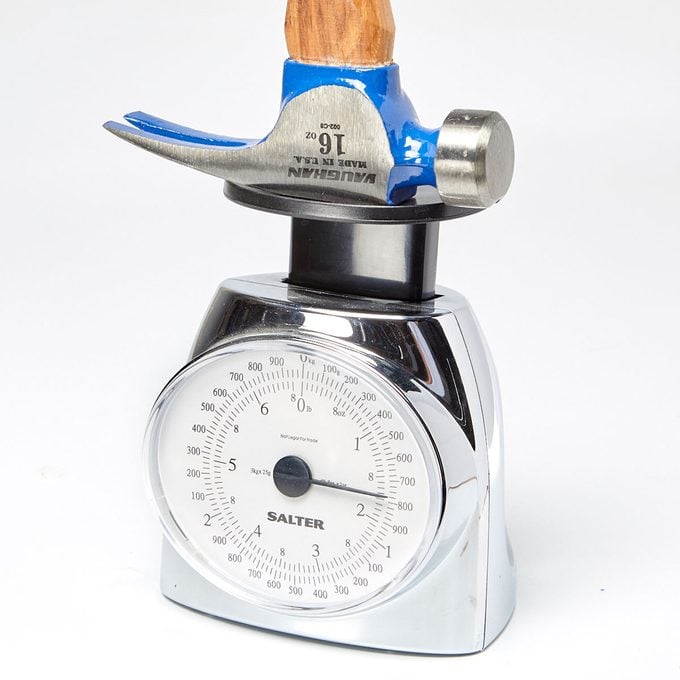
On This Page
Most hammer heads weigh anywhere between 16 and 22 ounces. But that can be a little misleading because there is no industry standard on how to weigh a hammer head. Weighing a hammer head with wooden and fiberglass handles is straightforward: just take off the head off the handle and weight it. But there is more of a gray area when it comes to hammers that are made with integrated steel handles and strike guards.
There are several things to consider when it comes to the weight of a hammer:
How you use it: If you do a lot of hammering above your head or even straight on, then lighter is better. If you are always swinging down low, like a mason building forms, then heavy is okay.
How often you use it: If it’s necessary that a hammer hangs from your pouch all day, but you use it infrequently, buy a lighter hammer. There’s no point in carrying around a massive weight on your side if you barely ever use it.
Your strength: Remember high school physics? Here’s a quick refresher: Force = Mass x Acceleration. This means a heavier hammer packs a larger wallop. BUT that’s only if you can swing the beast. There’s a point where a hammer becomes too heavy to swing fast, and a greater force would be achieved by swinging a lighter hammer, faster. What that point is depends on the strength of the swinger.
Balance: Some folks love to swing a hammer with a super heavy head and a feather light handle. Some prefer a hammer with a lower center of gravity like steel handled hammers have. Whenever possible, swing a hammer before buying one. Ask your friends, neighbors or the folks around you on a jobsite to try out their hammer before buying yours.
“The idea of balance means that weight is evenly distributed between top and bottom AND forward and backward. A well-balanced hammer will HELP swing itself. If you have an unbalanced hammer you might have less work hitting the nail but MORE work bringing it back up…unbalanced hammers cause muscles to ache after use!” – Charlie Vaughan, president of Vaughan Manufacturing
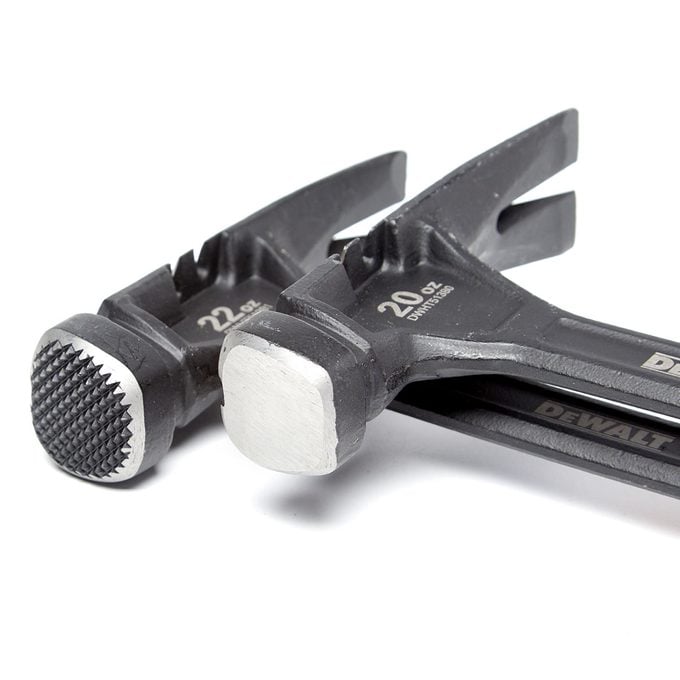
This is an easy decision. A milled-faced hammer (sometimes called waffle-head) has a little traction, if you will, and is designed to drive in a nail without bending it over. But that final blow is going to leave a waffle shaped mark on the surface. That’s okay for rough framing, but if you work with any material like interior trim, where a waffle-shaped mark would be undesirable, then get yourself a hammer with a smooth-faced head.
“I use three different DeWalt hammers. The 22oz framing hammer, the 14oz finish hammer, and the 22oz demo hammer. I swear by all of them for the comfort of handles, longer necks, and oversized faces. I can swing them all day and not get fatigued, the balance is awesome. I’ve been a carpenter/general carpenter for over 25 years and use a hammer for almost everything I do. I have found that the DeWalt line works best for me.” – Stu Cushman, general contractor
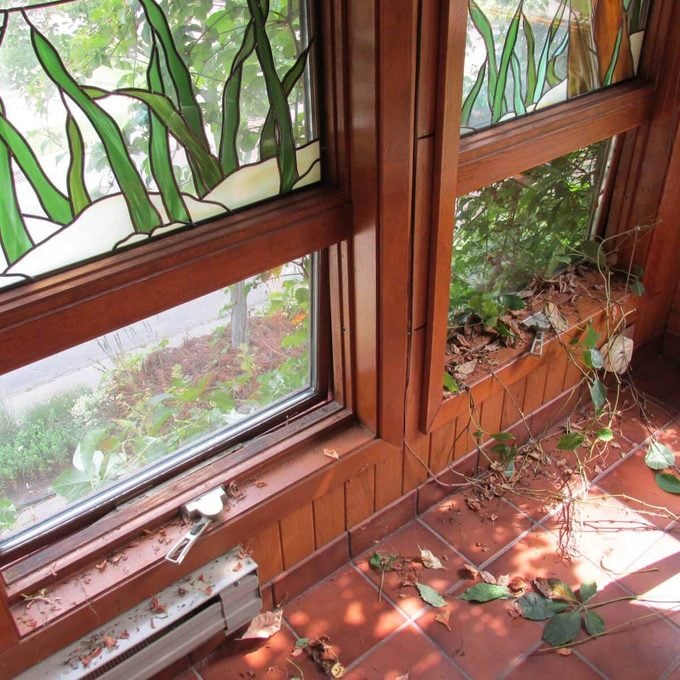
Hammers with a titanium head typically cost between $75 and $200, but they can reach the $300 neighborhood.
So what do you get for all that money? More bang where you want it. When a steel head strikes a nail almost 30% of the energy from the blow is recoiled back. When a titanium hammer head strikes a nail only 3% of the energy bounces back. This means titanium hammer get the same results as a steel hammer while weighing much, much less.
Also, this recoiled energy from a steel hammer head doesn’t just vanish into the ether; some of it will find its way back into the joints of the person swinging the hammer in the form of vibrations. If you pound in a bunch of nails every day and would enjoy properly functioning wrists, elbows, and shoulders 10 years from now, then invest in a titanium head hammer. Stiletto
“All day, every day I swing a 14-oz. Stiletto with an 18-in. wooden handle. It doesn’t weigh hardly anything, but it swings like a 24-oz. monster.” –Jonah Jardine, framing carpenter.
Titanium hammers are genuinely amazing, but be advised: You may want to keep a steel hammer on hand for your demo work because steel is actually harder than titanium. Or you could buy a hammer with a steel head (or head face) and a titanium handle, combining the best of both worlds.
“We do not recommend excessively beating on hardened Steel objects such as steel nail pullers, pry & crow bars, concrete stakes, foundation bolts, scaffolding pins & cup-locks, etc., as these objects will cause the milling on the solid Stiletto, Ti hammer face to wear down faster, just as they would on a steel milled face. The wear is typically just faster when used [titanium] in these applications, but usually no chipping or spalling (mushrooming) occurs.” –Product Manager, Stiletto Tools
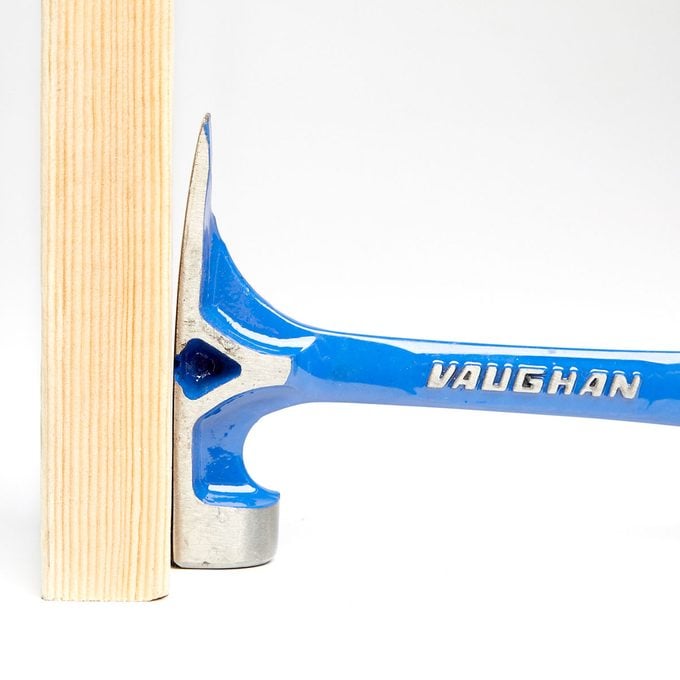
Flat-top hammers are steadily becoming more popular. The flat top allows the head to get into tighter spots. Plus, they look cool! Vaughan
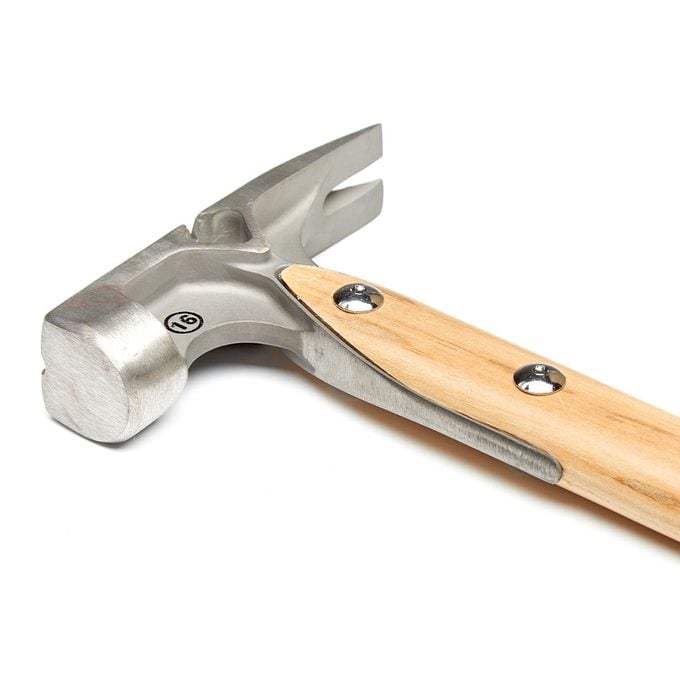
Non-steel handles can get beat up by misses. You know, those times when you miss the nail and the handle smashes against the surface. If you love wood handles and want to prevent them from getting beat up by overstrikes, consider a hammer with overstrike protection, like the one pictured above. Vaughan Dalluge
“I’m a wood handle guy, but when my guys get their hands on them (especially the newbies), they tend to beat up the handles pretty good. I started buying the Vaughan Dalluge 16-oz. hammers with the strike guard. They work awesome, and no more shredded handles.” –Lee Nelson, remodeler and tree service professional, Shell Lake, WI
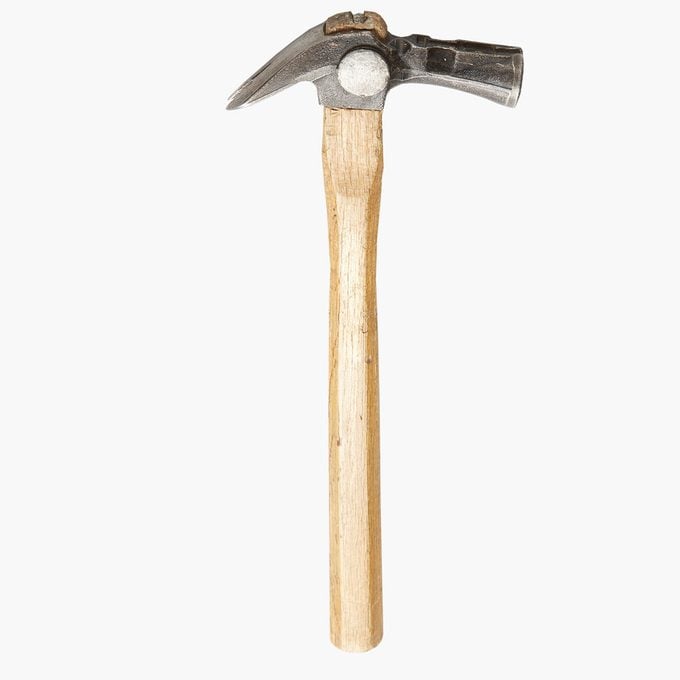
There are a dozens of specialty hammer heads to choose from. Again, it just matters how you use your hammer and how good it feels in your hand. The hammer shown here is a Japanese hammer (Kind of reminds one of the Philly Phanatic, mascot for the Philadelphia Phillies baseball team).
“Once you’ve found a favorite, nothing else compares. About 20 years ago, I took a chance on this odd-looking hammer. I was relieved to find the balance and feel exactly to my liking. Besides the perfect feel, there are some nice extras. The steep claw angle gives ample leverage for pulling nails. Also, the claw’s tips are pointed to aid in digging out nails that are sunk below the surface. A milled face on the side of the head allows “sideways” hammering in tight quarters. I don’t use it often, but it has saved me more than once.” – Brad Holden, woodworker and editor at The Family Handyman
Disclosure: This post is brought to you by The Construction Pro Tips editors, who aim to highlight products and services you might find interesting. If you buy them, we get a small share of the revenue from the sale from our commerce partners. We frequently receive products free of charge from manufacturers to test. This does not drive our decision as to whether or not a product is featured or recommended. We welcome your feedback. Have something you think we should know about? Contact us, here.